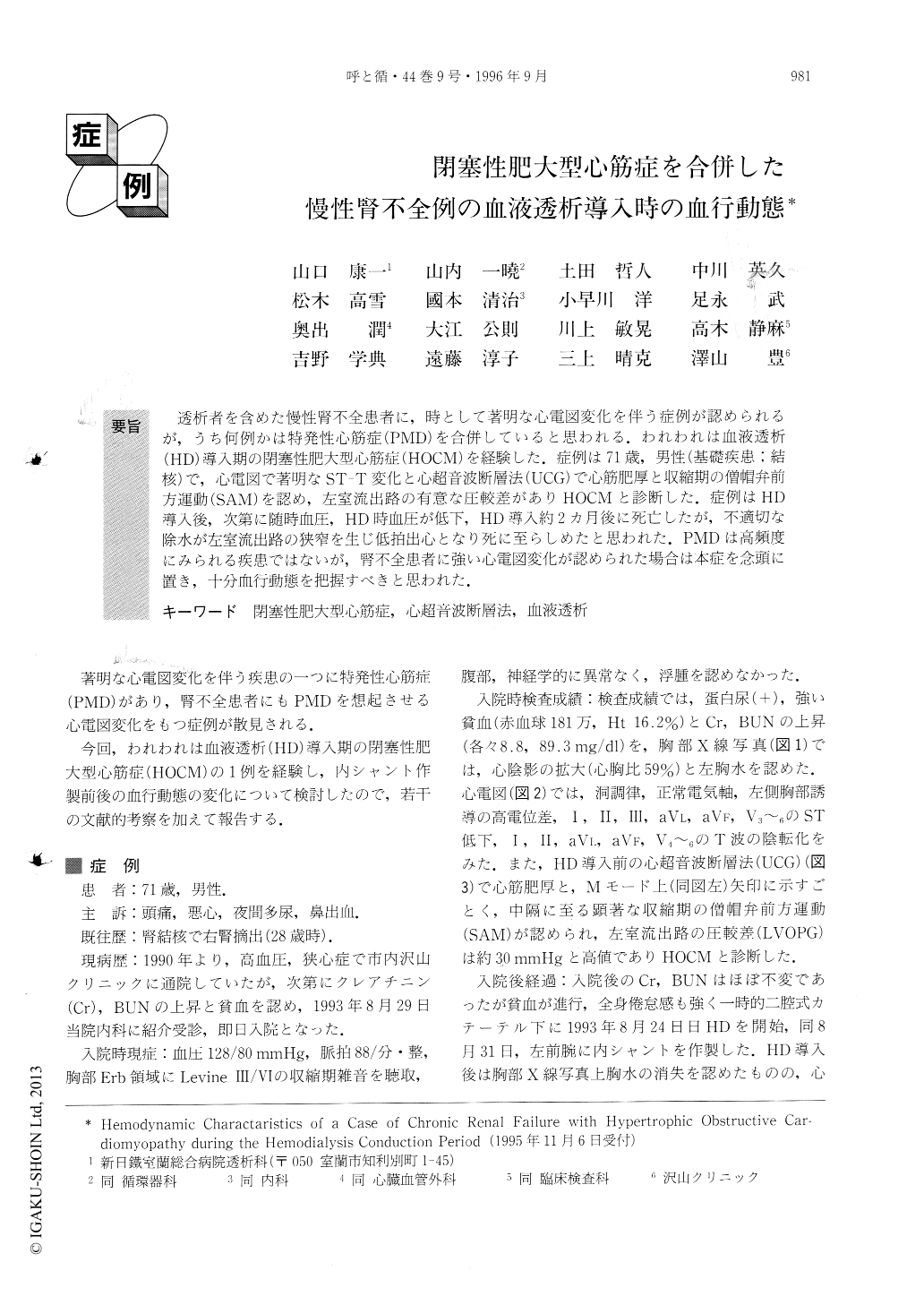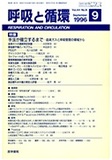Japanese
English
- 有料閲覧
- Abstract 文献概要
- 1ページ目 Look Inside
透析者を含めた慢性腎不全患者に,時として著明な心電図変化を伴う症例が認められるが,うち何例かは特発性心筋症(PMD)を合併していると思われる.われわれは血液透析(HD)導入期の閉塞性肥大型心筋症(HOCM)を経験した.症例は71歳,男性(基礎疾患;結核)で,心電図で著明なST-T変化と心超音波断層法(UCG)で心筋肥厚と収縮期の僧帽弁前方運動(SAM)を認め,左室流出路の有意な圧較差がありHOCMと診断した.症例はHD導入後,次第に随時血圧,HD時血圧が低下,HD導入約2カ月後に死亡したが,不適切な除水が左室流出路の狭窄を生じ低拍出心となり死に至らしめたと思われた.PMDは高頻度にみられる疾患ではないが,腎不全患者に強い心電図変化が認められた場合は本症を念頭に置き,十分血行動態を把握すべきと思われた.
Marked changes in electrocardiogram (ECG) data are sometimes seen in cases of chronic renal failure with or without hemodialysis. Several of such cases may contain primary cardiomyopathy (PMD).
We observed a case of hypertrophic obstructive car diomyopathy (HOCM) during the hemodialysis conduc. tion period.
The patient was a 71-year-old male, who had marked ST T change in ECG, and diffuse myocardial hypertro. phy and systolic anterior movement of the mitral valvein the echocardiogram. This case was diagnosed as HOCM with left ventricular outflow (LVO) tract pres-sure gradient (PG).
The patient in this case died 2 months after hemodialysis conduction, with a gradual fall in casual blood pressure (BP) and BP undergoing hemodialysis. An inappropriate ultrafiltration seemed to increase LVO stenosis and decrease cardiac output.
PMD is not a common disease. but the hemodynamics of renal failure patients with marked ECG change should be taken into consideration.

Copyright © 1996, Igaku-Shoin Ltd. All rights reserved.


